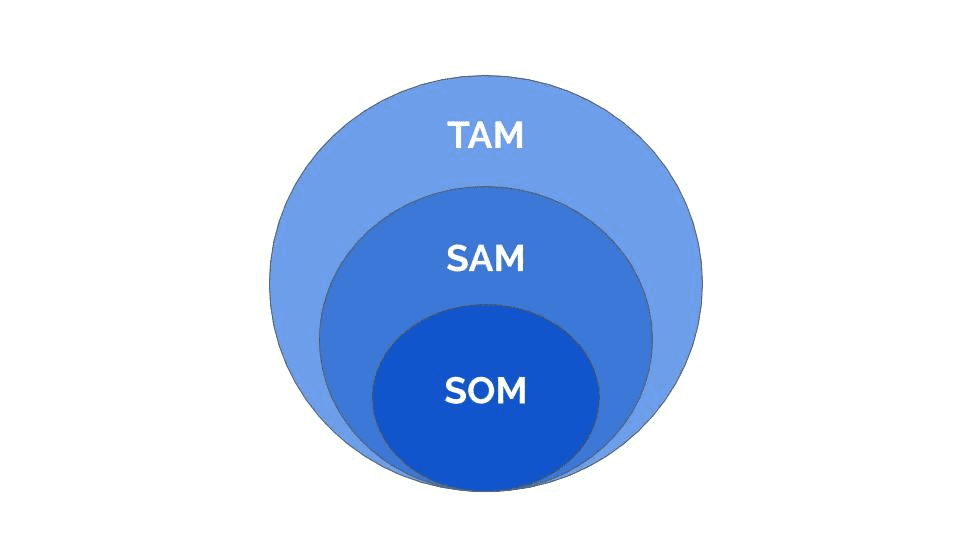When I was asked to build a Customer Success organization from the ground-up, having spent many years in sales leadership roles for SaaS businesses, I knew I would see CS through a growth tinted lens. Luckily for me, at the time, we were a Series A company, requiring exactly that mindset.
A growth focused CS leader (who is also responsible for revenue) will have two key goals:
- Retention (What dollars renew based on the existing client base)
- Expansion (What additional dollars are brought in through cross-sell / up-sell from the existing client base)
Each budget cycle, you will be posed with the question: What should your goals for retention and expansion be? Determining retention goals are generally based on industry benchmarks, so for this short piece, I wanted to share a framework I’ve utilized to help you determine expansion targets.
 TAM-SAM-SOM
TAM-SAM-SOMThe easiest way to understand your total expansion market opportunity is to calculate your SOM [(Serviceable Obtainable Market) the delta between the TAM (Total Addressable Market) & your current book of business (or SAM)] on a per LOGO basis.
Step One: Calculating SOM
- The maximum price point x user (if a customer purchased your entire suite of products) x Total number of potential users within your existing LOGOs
- The above is also a way to determine your potential for cross-sell (new products) + up-sell (additional licenses of existing products)
- Subtract the existing revenue
- The remaining number is your SOM
Step Two: Removing customers from the SOM analysis
- Identified as a churn risk
- Have a closed/lost opportunity within the past (x) number of days (dependent on your business)
- Expansion products would not apply
Step Three: Determine the % of the SOM that can be obtained within a given fiscal period
- This should be based on historical performance (% attainment of SOM for previous FY) and is likely a negotiation between CEO/CFO/CCO/BoD.
How have you determined expansion goals for your SaaS business?